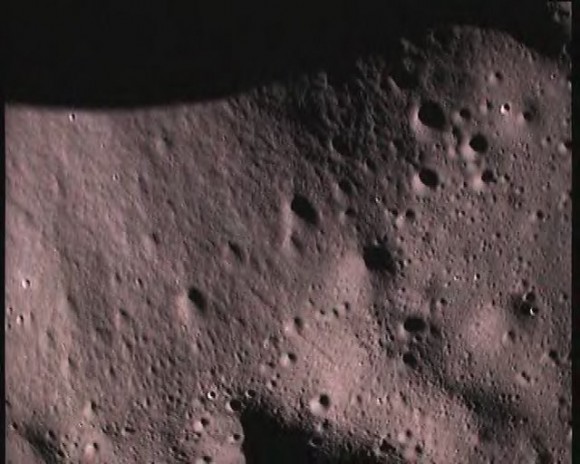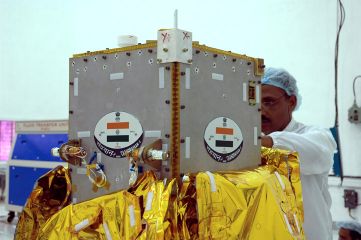The photographs and measurements taken by the MIP spacecraft during the 25 minutes between its separation from Chandrayaan-1 and its crash at 17:01 Israel time, were captured by Chandrayaan computers and will be transmitted to Earth at a later stage

The Indian MIP spacecraft that was launched from the Chandrayaan-1 spacecraft, which has been orbiting the moon for about a week, crashed tonight on the lunar soil. MIP, an acronym for the phrase Moon Impact Probe, was one of the 11 payloads on the Chandian-1 spacecraft, and it hit tonight at 20:31 India time (17:01 Israel time). The date chosen was the birthday of Indian Prime Minister Pandit Jawaharlal Nehru, who was in office when the Indian space program began in 1962.
This is The first Indian spacecraft that reached the moon The spacecraft hit the lunar soil near the south pole. MIP's weight at launch was 34 kilograms. The box-shaped spacecraft contained three instruments: a video imaging system, a radar altimeter, and a mass spectrometer. The camera is designed to take pictures during the descent, the altimeter is designed to measure the rate of descent of the spacecraft to the surface. These devices were used this time for a crash landing but they may one day also be used in missions that will require soft landings. The mass spectrometer was installed to study the ultra-thin lunar atmosphere.
The journey took 25 minutes, and immediately after launch from Chandrayaan, a series of automated processes began. The spacecraft activated its engines, turned them so that they would give it a direction to descend to the desired point on the moon, and began a rapid descent towards the surface of the moon.
All data from the instruments were transmitted from MIP to the Chandrayaan-1 spacecraft. The spacecraft recorded them in internal memory and will broadcast them later. Eventually the spacecraft made a crash landing on the surface of the moon and its instruments stopped working.

The Indian Space Agency is satisfied and say that the operation has ended successfully. Even before the MIP operation, they started activating two of the devices on board Chandrayaan-1 - the surface mapping camera, and the radiation monitor - and now they will activate the other eight devices in the coming days.
Chandrayaan-1 was successfully launched aboard a PSLV C11 rocket on 22 October 2008 from the Indian Space Center at Satish Dhawan, Shrihakuta into an initial elliptical orbit around the Earth. After that, the orbit was raised step by step and the spacecraft passed near the moon, then, on November 8, its engines were activated and it gradually moved to a circular orbit, 100 kilometers above the surface.
The transmissions from the spacecraft, currently mainly the telemetry measurements, reach the control center in Bangalore, with the help of the Del India deep space network antennas in Bialo.
